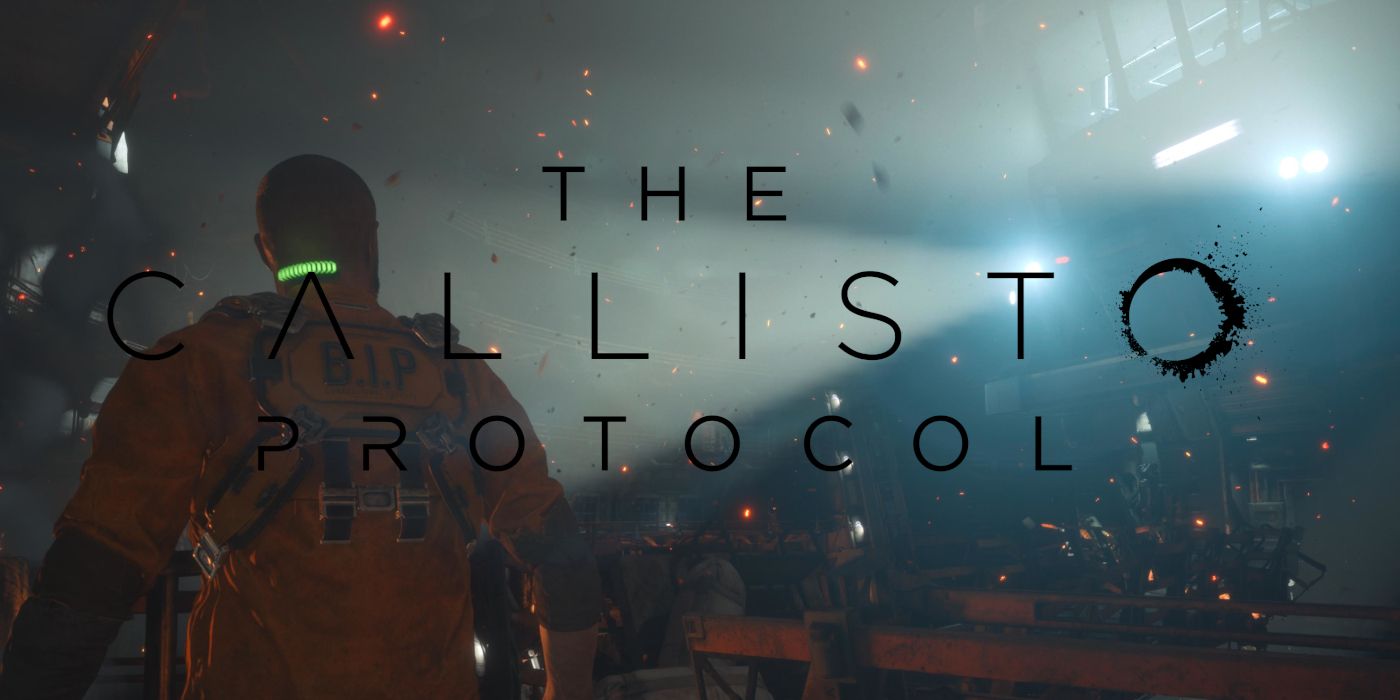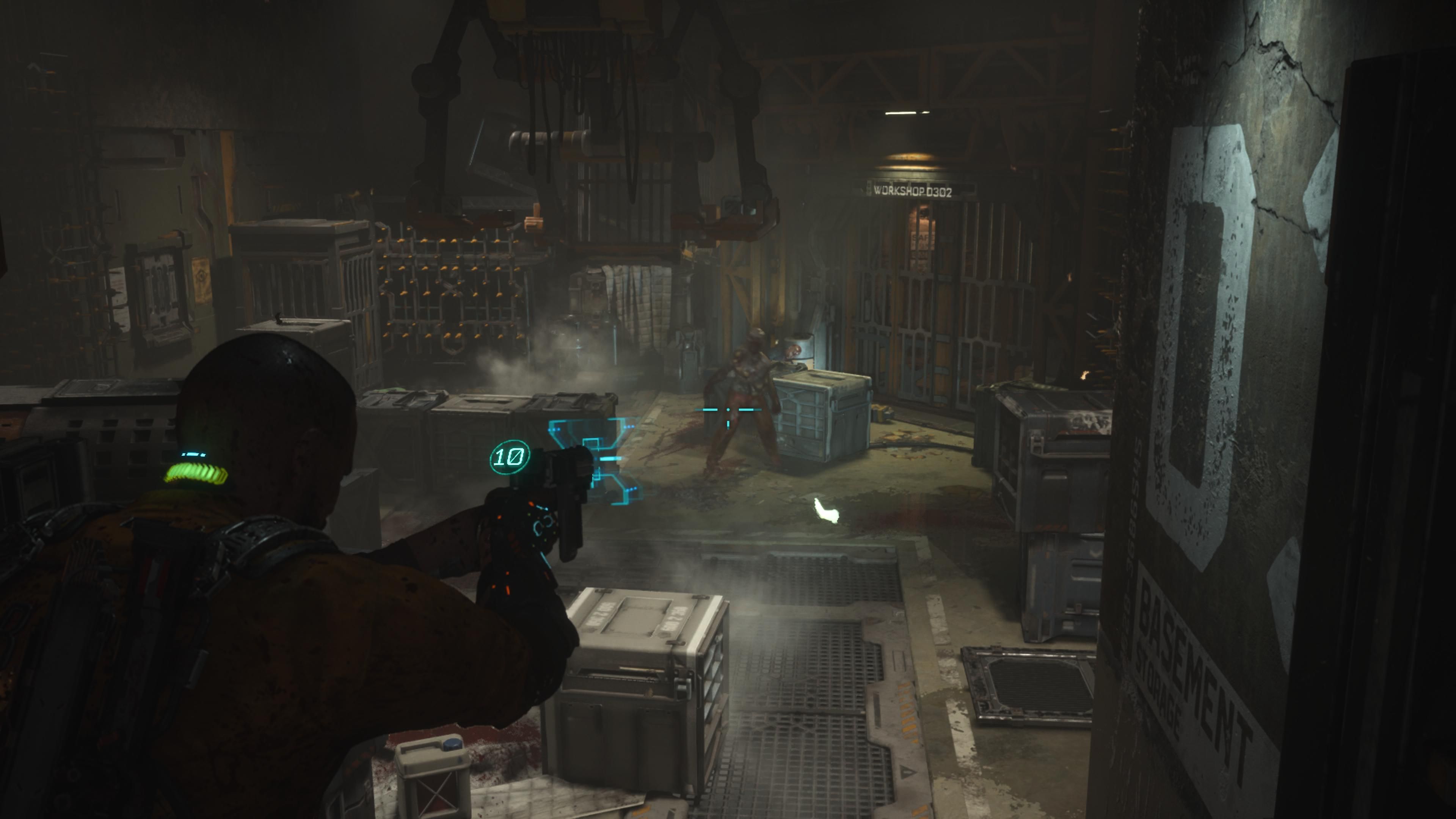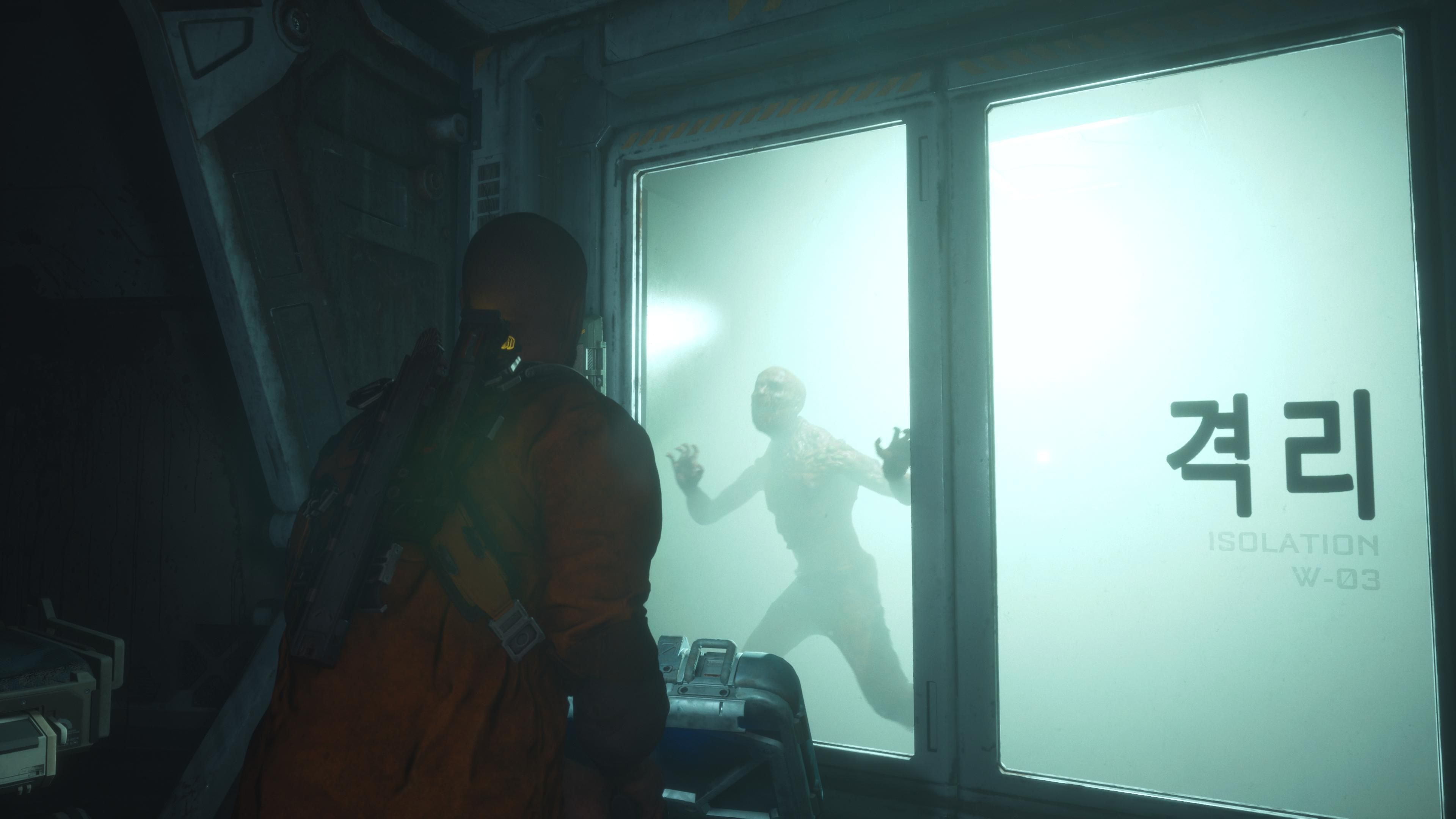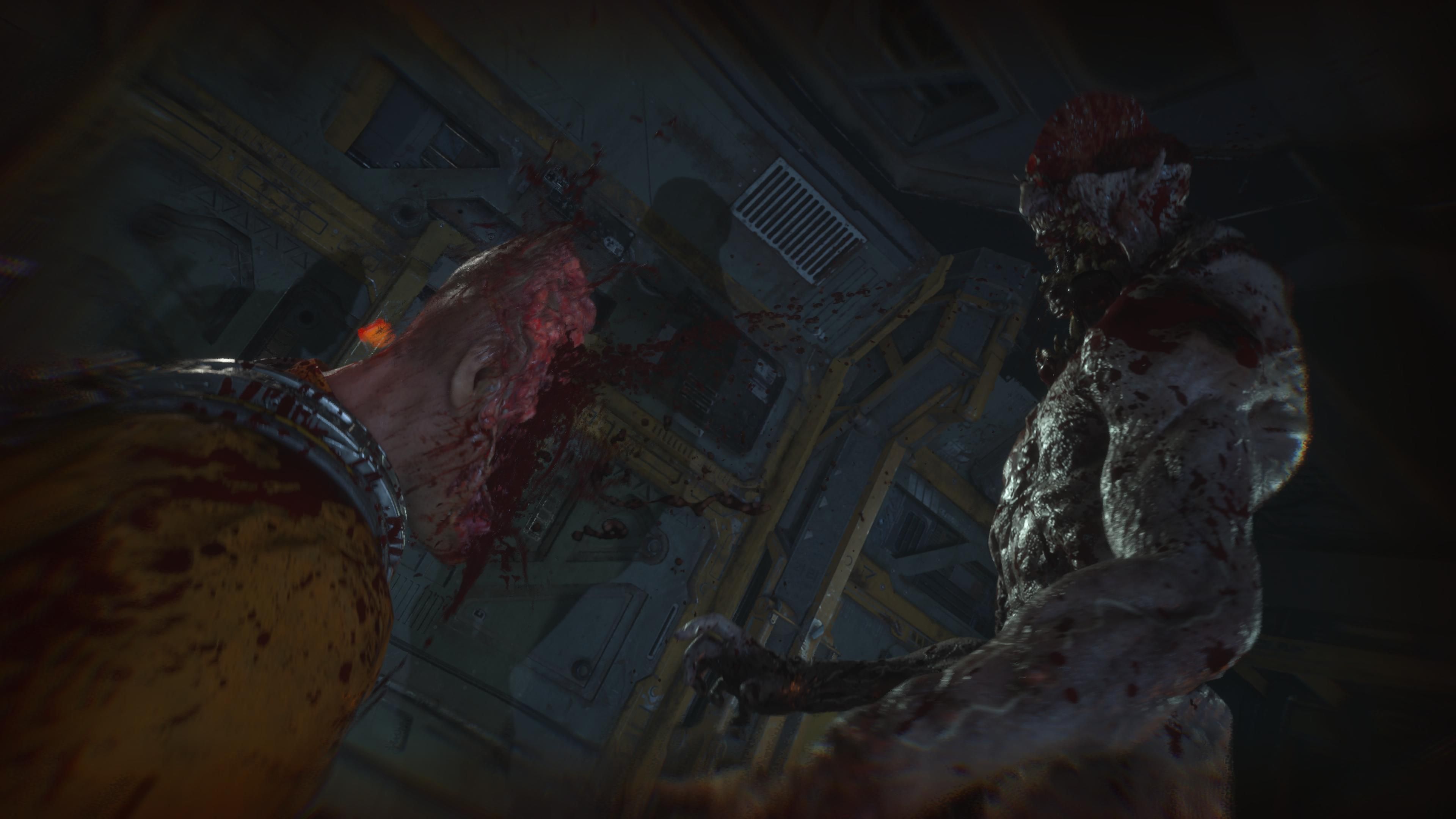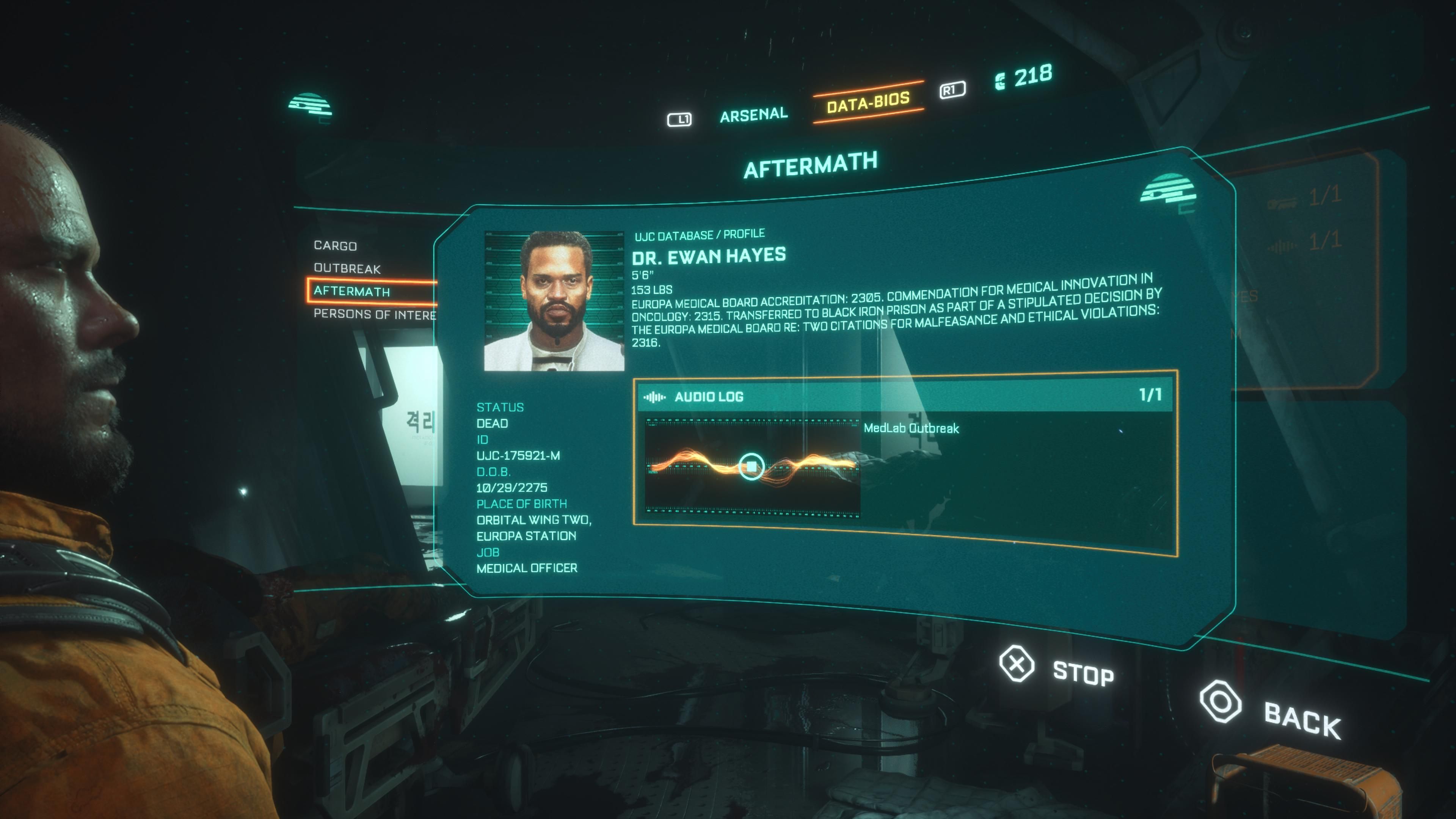The Callisto Protocol can’t help but live under Dead Space’s shadow. As a gory sci-fi horror action adventure, it materially delivers on expectations - with mountains of severed limbs and viscera, terrifying pitch-dark atmosphere, and hideous Mortal Kombat fatality-like death sequences - but struggles time and again to tie its pieces together into a compelling whole. Packed with visual detail but light on substantive gameplay ideas, The Callisto Protocol sometimes even feels rushed in certain areas of its design.
Protagonist Jacob Lee is having a terrible day. A space trucker on a routine cargo delivery to Jupiter’s moon Callisto, his ship is summarily breached, boarded, and crashed into the wintry surface. A few conflicts and misunderstandings later, he finds himself bagged by a humorless warden, tagged with an implant, and tossed into a prison jumper, before being sorted among the many inmates of The Callisto Protocol’s Black Iron Prison setting. Then, a mutant plague throws the entire facility into murderous disarray.
Josh Duhamel, Karen Fukuhara, and Sam Witwer all do their best to inject terror and vitality into their respective performances, even though The Callisto Protocol’s narrative rarely holds up to close inspection. It’s a familiar plague story told in a familiar style, an escape tale that’s repeatedly interrupted to superficially extend the journey; it's hilarious how often the game relies upon Jacob simply falling as its primary plot device. The mocap and character design are impressive, with any lead 100% recognizable as their performing stars, and watching Duhamel repeatedly die remains unsettlingly gruesome.
When he’s not being torn to shreds in glistening detail, Jacob can usually be found squeezing himself into a truly bewildering number of tight crevices and air ducts. Otherwise, he's tangling with mutated humans, and while the predictable range of enemy types is a concern (stock-standard zombie fare), it’s more the matter of combat diversity that turns so many of The Callisto Protocol’s encounters into slogs. A scant selection of weapons in the game amounts to two different pistols and two different shotguns for most of its 12-hour runtime, along with the GRP, an energy-limited gravity warping device. No lasers, no flamethrowers, no weirder sci-fi weaponry - just ballistics, start to finish.
The combat dodge mechanic, like numerous other systems, never gels properly with the game around it. Mutants love ganging up on Jacob whenever possible, and holding the analog stick left or right to dodge a zombie haymaker means nothing to a second or third enemy attacking from offscreen. The lack of a snap turn makes most big brawls cumbersome affairs, and reloading guns is slow and easily interrupted. The Callisto Protocol does prioritize melee as its central combat concept, but it's all reliant on one single weapon, which doesn't feel like enough in practice.
The oppressive atmosphere seen in previews of The Callisto Protocol has definitely remained intact. The game features outstanding sound design, where every corner of the environment menacingly echoes, at least when it’s not packed with shrieking mutants. There are no meta quips or jokes to be found here, and it’s refreshing to find a game so tonally dark which never contrasts or softens that quality with snark.
Unfortunately, most levels of The Callisto Protocol present boringly similar environments. Whether it’s living quarters, offices, caverns, or industrial hallways, these highly detailed backdrops are finely rendered but primarily built of the same brown and metallic blue hues. Some unique vistas do emerge and certain environments in the latter portion of the game carry more personality, but performing fights in similar spaces for hours takes its toll.
The small handful of boss fights are outright duds, too, with one reused wholesale three times, and there are no puzzles or any other diversions to mix things up. The Callisto Protocol’s flow typically amounts to crawling through a duct, getting jumpscared by mutants to kill, looking for a door and opening it if locked, then forging ahead to the next area. It’s a routine which grows tedious, feeling uninspired by the halfway point of the adventure.
Gameplay and design issues plague The Callisto Protocol: harmless jumpscares frequently and predictably trigger when crawling through ducts or shimmying, with rarely any impact outside of the occasional QTE. Audio logs cannot be activated while moving, so players have to just stare blankly at a menu screen while standing still to listen, and they’re rarely worth the trouble. Dying past a checkpoint after using a Reforge means having to repeat every previous action again on respawn, like rummaging through lockers or selling vendor trash for credits. Stomped items from downed enemies can fall into the floor and disappear, and we lost a boss reward in this way during our playthrough, with no way to get it back. Cinematics cannot ever be skipped, even on a second go-round, and there is no new game+.
These problems and others make much of The Callisto Protocol ultimately feel like wasted potential. For what may be one of the most highly detailed sci-fi horror environments ever seen in a game, its rooms and hallways remain an empty - though grisly - backdrop, rarely presenting environmental narrative, anything to interact with, or a compelling pathway through. Killing mutants in the first hour feels identical to killing them in the last, and three difficulty levels only seem to affect mutant health pools. Maybe The Callisto Protocol's upcoming DLC will breathe new life and wonder into its world, but Black Iron Prison remains a far cry from the dynamic decks of the USG Ishimura.
The Callisto Protocol releases on December 2 on PC, Xbox One, Xbox Series X/S, PlayStation 4, and PlayStation 5. A digital PlayStation 5 code was provided to Screen Rant for the purpose of this review.

